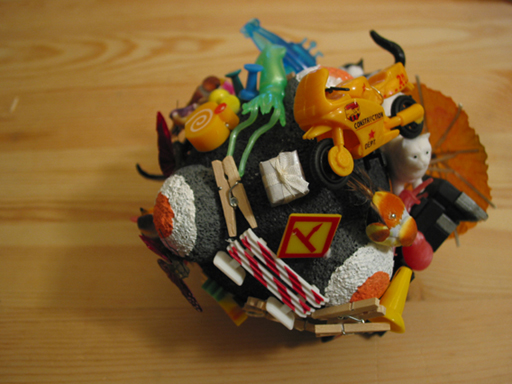Speaking about the 'Internet of Things' the other day, this Technology Review also makes sense to be read. It's about an "esperanto for toaster" concept: ZigBee, namely a wireless standard that could be used a a "common language" to lights, appliances, doors or cell phones. Specifications could be downloaded here.
In the not-too-distant future, your cell phone might become the key to your home. By transmitting a signal to a sensor, your phone will announce your arrival and the front door will unlock. (...) But before a swarm of sensors can turn into an intelligent network, though, they need a way to communicate with each other. Enter ZigBee. Based on an IEEE radio standard called 812.15.4, it allows digital transmissions of up to 1Mbps in one of two frequency ranges, 2.4GHz or 915MHz (in the Americas).
That is surely another step towards integrated computation. Besides, some big guys are following this, so that interoperability can work out:
More than 150 member companies already belong to the ZigBee Alliance, including such electronics heavyweights as Honeywell, Motorola, Philips, and Samsung. Alliance chairman Bob Heile claims that ZigBee will enable any compatible device -- regardless of the manufacturer -- to communicate with any other ZigBee device, right out of the box. What's more, the specification allows ZigBee devices to form mesh or cluster networks spontaneously, without any intervention from end users, installers, or (gulp) system administrators.
Also, after reading about this Zigbee, I stumbled across this cool article about ambient findability by Peter Morville. The authors adresses this notion of being able "to find anyone or anything from anywhere at any time". The article also tackles various location-based services which are directed towards this goal.
A clear sign of progress is the emergence of ubiquitous findable objects (UFOs). GPS, RFID, UWB, and cellular triangulation enable us, for the first time in history, to tag and track products, possessions, pets, and people as they wander through space and time
Today, a UFO is not longer a UFO. Of course, this definitely echoes with the Bruce Sterling's last book and the very concept of spime (one of the characteristic of spime is to be a ubiquitous findable object). They are "searchable, like Google. You can think of Spimes as being auto-Googling objects" as he says (more about it here).
On a different note, I find interesting what Peter Morville's points out about the social control created by this (LBS):
On a voyeuristic note, we'll all be secretly interested in collision detection. Most likely, Google Alerts will notify us of brief or sustained meetups between two or more individuals from within our social networks. In fact, we'll all come to rely on anomaly detection to highlight meaningful deviations in individual habits or in the flocking behavior of crowds.















